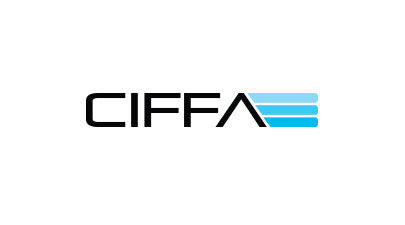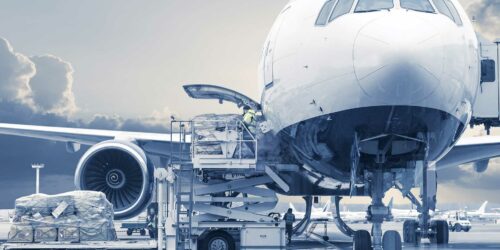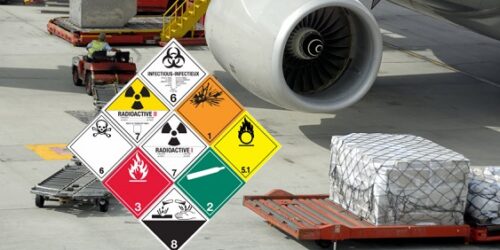CIFFA Exam Sample Practice Questions & Answers – Land Transportation

CIFFA Exam Sample Practice Questions & Answers – Land Transportation
Questions
- What are the two major railways in Canada?
- Name the 8 principal products carried by rail.
- Shortline railways could be considered as to CP and CN.
- Name at least three different types of rail equipment available for movement.
- What do COFC and TOFC mean?
- Define a unit train.
- When moving over-dimensional cargo by rail, what are the factors a freight forwarder should be aware of?
- What is meant by an intermodal shipment?
- What is a “double-stack” train?
- What does FAK mean?
- What does “piggyback” mean?
- When would you choose to move a shipment by rail?
- If you book an ocean container shipment from Toronto and it is sailing from Halifax, who regularly makes the arrangements with the railway?
- What is a pool car operator, and what services do they provide?
- If there is loss or damage to cargo, is a pool car operator liable?
- Who regulates the trucking industry?
- What is the purpose of the truck waybill?
- Can a truck waybill be consigned to order?
- Unless otherwise stated, what is the maximum liability of a Canadian trucking company in the case of loss or damage?
- Generally, in Canada, what is the maximum legal height limit for a truck before permits are required?
- What is a cartage carrier?
- What are the three levels of services generally offered by trucking or cartage companies?
- Within Canada, when does a trucker need a special license?
- Name three advantages of moving freight by truck.
- Name three disadvantages of moving freight by truck.
- What is the generally accepted freight density ratio for trucking in Canada?
- You have a truck shipment that weighs 500 lb and measures 65 ft3. You are being charged CAN $5.00/100 lb. For what weight will you be charged and what will the trucking charges be?
Height Restrictions in Trucking
The most well-known restrictions are that total height of freight and truck should not exceed 13 ft 6 in. This is measured from the ground or road level.
If you have a cargo unit which, when using a standard flatbed trailer, would exceed the height limit of 13 ft 6 in, you must find special trucking equipment for which the height of the loading total form is less than the standard level of 5 ft.
Special truck equipment would be a:
• Drop-deck trailer
• Double-drop-deck trailer
• Step-deck trailer
• Low-bed trailer or
• Goose-neck trailer.
The idea is that by reducing the height of the actual load level the total height of cargo and truck trailer stays within 13 ft 6 in.
Only when the use of special truck equipment is insufficient to reduce the load to the required height of 13 ft 6 in, is it necessary to apply for the appropriate permits of all Ministries of Transport involved. A permit itself may be inadequate. The trucker still may have to make an actual route investigative for overhead wires, overpasses, bridges, etc.
Answer the following.
- Is there any problem to find truck equipment to handle a standard 20-ft or 40-ft container having a height of 8 ft 6 in? Please comment.
- Is there a problem with a 9-ft 6-in container also called high cube? If yes, what trucking equipment would you propose to use?
- You have to ship by truck a crate of machinery weighing 30,000 lb, measuring 30 ft x 8 ft x 10 ft 6 in. What do you propose to do in terms of selecting appropriate truck equipment?
Trucking rates
In general, all truck rates are subject to a limit of allowed density (or volume) per pound in weight. The common minimum density is 10 lb/ft3. Generally, all trucking rates are quoted and charged at a rate of Dollars/100 lb.
You must always check with your carrier what their minimum freight density is. Some cartage companies will use a minimum freight density of 240 kg/m3. Some trucking companies, predominately in the Maritimes, might use a freight density of 15 lb/ft3.
Unless otherwise stated, trucking rates presented throughout this course will be based on a minimum cargo density of 10 lb/ft3.
Short form for cubic feet is ft3. You may also see cuft. or cbft.
Easy rule – multiply your ft3 measurement by 10, if the result is greater than the actual weight, then the cargo will travel on the volume weight –
Answer the following.
Calculate the correct chargeable weight and the trucking freight costs involved.
- 100 cartons of glasses, totals: 200 lb, 200 ft3, rate CAN $10.00/100 lb.
- 50 cartons of lamps, totals: 500 lb, 100 ft3, rate CAN $8.00/100 lb.
- 5 crates of machinery, totals: 4,500 lb, 25 ft3, rate CAN $5.00/100 lb.
Trucking charges – 1
The main emphasis in the following assignments is for you to learn to apply the theoretical concepts described in the textbook, in a practical context. This time it concerns the practical aspects a freight forwarder needs to know when dealing with truck transportation on a daily basis.
You will be provided with a mock truck tariff and various scenarios. You will have to determine the correct chargeable weight, as well as what the truck charges will be.
As a forwarder, always present shipping dimensions as:
Length x Width x Height
Unless otherwise noted, dimensions provided throughout the program will always be given in this manner.
This is the standard that should always be followed. Be sure to educate your customers about this standard.
At this point, you should become familiar with conversions to Imperial from Metric, and vice versa. Refer to Conversion Tables in Appendix “B” and weight/volume ratio information in Appendix “C.” Become familiar with conversions, as this is a very important area that you will have to deal with on a day-to-day basis.
Answer the following.
Using the CIFFA – Logistics Canada Trucking Chart in Appendix “D”, determine the trucking charges associated with each shipment.
- Customer D, located in Hamilton, has 5 skids of office furniture, being delivered to terminal Toronto. Each skid weighs 385 lb, and has dimensions of 48 in x 40 in x 36 in.
Step 1:
Step 2:
Step 3:
Step 4:
- Customer E, located in Chatham, has 45 cartons of hockey cards. Each carton has dimensions of 18 in x 18 in x 8 in, and each weighs 17 lb. The hockey cards are being delivered from terminal Toronto.
Step 1:
Step 2:
Step 3:
Step 4:
- Customer H, located in Cornwall, has 10 pallets of computer paper, being delivered from terminal Toronto. Each weighs 436 kg, with dimensions of 1.20 m x 0.80 m x 1.30 m each.
Step 1:
Step 2:
Step 3:
Step 4:
Trucking charges – 2
- Determine the trucking charges associated with each shipment using the conversions and weight/volume ratio tables and CIFFA – Logistics Canada Trucking Chart found in Appendices “B”, “C” and “D”. The accepted freight density ratio for trucking is 10 lb/ft3. Always check with the carrier!
100 cartons of books to be delivered to London, Ontario from terminal Toronto. Totals: 300 ft3, 300 lb.
Step 1:
Step 2:
Step 3:
Step 4:
Your customer is located in Burlington and has 10 skids of bottled water, being delivered to terminal Toronto. Each skid weighs 1,000 lb and has dimensions of 48 in x 40 in x 70 in.
Step 1:
Step 2:
Step 3:
Step 4:
Your customer is located in Brockville and requires a delivery of 5 boxes of electronic devices to terminal Toronto. Each box weighs 10 lb and has dimensions of 12 cm x 10 cm x 5 cm.
Step 1:
Step 2:
Step 3:
Step 4:
Your customer has 6 skids of paper for delivery from terminal Toronto to Bowmanville. Each skid weighs 1,600 lb and has dimensions of 38 in x 20 in x 58 in.
Step 1:
Step 2:
Step 3:
Step 4:
Answers
- What are the two major railways in Canada?
Canadian Pacific Railway (CP Rail), Canadian National Railway (CN Rail).
- Name the 8 principal products carried by rail.
Wheat and other grains, coal, potash, sulphur, copper, nickel and iron ore, sand and stone, automobiles and trucks, forest products, liquefied petroleum gas, petroleum products, chemicals and phosphate rock, ocean/multimodal containers.
- Shortline railways could be considered as feeder railways to CP and CN.
- Name at least three different types of rail equipment available for movement.
Boxcars, hopper cars, automobile cars, gondolas (top loading for bulk), flat cars.
- What do COFC and TOFC mean?
Container on Flat Car, Trailer on Flat Car.
- Define a unit train.
Generally carries specific bulk commodity, such as coal, continuously between two points. These trains are almost never uncoupled.
- When moving over-dimensional cargo by rail, what are the factors a freight forwarder should be aware of?
Widths exceeding 10 ft, 8 in; heights exceeding 11 ft; cargo exceeding the length of the rail car; cargo weights exceeding 150,000 lb.
- What is meant by an intermodal shipment?
The movement of goods that involves two types of transportation between the origin and destination, i.e., rail and ship.
- What is a “double-stack” train?
A train that has special railcars that allow two containers to be stacked on top of each other.
- What does FAK mean?
Freight all kinds.
- What does “piggyback” mean?
Historically, “piggyback” was the loading of a truck trailer onto a rail flat car that was railed to a terminal in the city of its final destination. “Piggyback,” in its purest sense, is the utilization of rail equipment to move a “block” of cargo from origin to destination. This “block” of cargo can be a truck trailer, an ocean container, or an intermodal container supplied by the railway. The term “piggyback” is being replaced by the term intermodal.
- When would you choose to move a shipment by rail?
When the shipment is over-weight or over-dimensional (normally over-weight).
- If you book an ocean container shipment from Toronto and it is sailing from Halifax, who regularly makes the arrangements with the railway?
The steamship line normally makes the arrangements with the railway to move the container from the railhead to the port of loading.
- What is a pool car operator, and what services do they provide?
They consolidate small shipments into full railcar loads to move between two named cities.
- If there is loss or damage to cargo, is a pool car operator liable?
Yes, they are fully liable, as they are acting as the principal carrier.
- Who regulates the trucking industry?
Each provincial or territorial government.
- What is the purpose of the truck waybill?
It is a receipt for the goods, and acts as a contract of carriage only. It does not confer title or ownership of the goods.
- Can a truck waybill be consigned to order?
No, it is a document of movement only.
- Unless otherwise stated, what is the maximum liability of a Canadian trucking company in the case of loss or damage?
CAN $2.00/lb or CAN $4.41/kg.
- Generally, in Canada, what is the maximum legal height limit for a truck before permits are required?
13 feet 6 inches.
- What is a cartage carrier?
A carrier that offers a trucking service within the city limits.
- What are the three levels of services generally offered by trucking or cartage companies?
Expedited or rush service; specialty shipments; regular LTL or overnight service.
- Within Canada, when does a trucker need a special license?
When there is a shipment of over-width or over-height cargo that exceeds provincial limits. When the cargo is moving into another province where the trucker isn’t licensed to move cargo. When moving dangerous goods. The trucker must then obtain the required permits to move the cargo.
- Name three advantages of moving freight by truck.
Door-to-door movements; can deliver the freight into areas not served by rail; doesn’t depend on schedules; free choice of routes (can go around traffic).
- Name three disadvantages of moving freight by truck.
Interprovincial licensing regulations; not suitable for bulk transportation over long distances; road weight limitations; higher risk of accidents; higher degree of pollution; greater maintenance of trucks.
- What is the generally accepted freight density ratio for trucking in Canada?
10 lb/ft3, but always check with the carrier.
- You have a truck shipment that weighs 500 lb and measures 65 ft3. You are being charged CAN $5.00/100 lb. For what weight will you be charged and what will the trucking charges be?
Actual weight = 500 lb
Volume weight = 65 ft3 x 10 lb/ ft3 = 650 lb
Chargeable weight = 650 lb (the trucking company will charge the higher of the actual vs. volume weight)
Freight charge = 650 lb x CAN $5.00 100 lb
= CAN $32.50
Height Restrictions in Trucking
- Is there any problem to find truck equipment to handle a standard 20-ft or 40-ft container having a height of 8 ft 6 in? Please comment.
A container chassis is usually 5 ft high. Adding a standard container of 8 ft 6 in totals 13 ft 6 in. Therefore, there is no problem to find truck equipment (chassis) for a 20-ft or 40-ft standard container.
- Is there a problem with a 9-ft 6-in container also called high cube? If yes, what trucking equipment would you propose to use?
From the explanation under (1) follows that you cannot use a regular container chassis or flatbed trailer because the total height would be 5 ft + 9 ft 6 in = 14 ft 6 in.
Note: there is a special low bed trailer called a gooseneck trailer, which permits loading a 9-ft 6-in container so you stay within the prescribed height of 13 ft 6 in for road regulation height.
It should be noted that a flatbed trailer is not suitable as trucking equipment to haul ISO containers because the containers cannot be adequately secured on flatbed trailers. Containers on flatbed trailers represent a danger on roads and if container slips off the flatbed trailer, such an accident can cause damage to the cargo loaded.
- You have to ship by truck a crate of machinery weighing 30,000 lb, measuring 30 ft x 8 ft x 10 ft 6 in. What do you propose to do in terms of selecting appropriate truck equipment?
A regular flatbed trailer with a height for the loading platform of 5 ft is not suitable in this case. You need a double-drop trailer, also called step-deck trailer with a height off the ground of not exceeding 3 ft.
A drop deck trailer actually has two different load levels. There is the actual loading deck and then there is the higher, so called running deck, which is over the rear wheels of the tractor. The trailer got its name because of that difference in levels or steps.
In this case, the trucker must find a step-deck trailer with a loading deck of at least 30 ft in length. Finding such a trailer is usually not a problem. Note that an overhang of the cargo over the back of the trailer is usually not permitted.
Trucking rates
- Calculate the correct chargeable weight and the trucking freight costs involved.
100 cartons of glasses, totals: 200 lb, 200 ft3, rate: CAN $10.00/100 lb.
Actual weight = 200 lb
Volume weight = 200 ft3 x 10 lb/ft3 = 2,000 lb
We will be charged on the greater of the two, or charged for 2,000 lb.
Charge = 2,000 lb x CAN $10.00 = CAN $200.00
100 lb
50 cartons of lamps, totals: 500 lb, 100 ft3, rate: CAN $8.00/100 lb.
Actual weight = 500 lb
Volume weight = 100 ft3 x 10 lb/ft3 = 1,000 lb
Charge = 1,000 lb x CAN $8.00 = CAN $80.00
100 lb
5 crates of machinery, totals: 4,500 lb, 25 ft3, rate: CAN $5.00/100 lb.
Actual weight = 4,500 lb
Volume weight = 25 ft3 x 10 lb/ft3 = 250 lb
Charge = 4,500 lb x CAN $5.00 = CAN $225.00
100 lb
Trucking Charges – 1
Using the CIFFA – Logistics Canada Trucking Chart in Appendix “D”, determine the trucking charges associated with each shipment.
- Customer D, located in Hamilton, has 5 skids of office furniture, being delivered to terminal Toronto. Each skid weighs 385 lb, and has dimensions of 48 in x 40 in x 36 in.
Step 1: determine the actual weight of the shipment.
385 lb x 5 skids
= 1,925 lb
Step 2: determine the volume weight of the shipment.
(L x W x H x P) ÷ 1,728 x 10
= (48 x 40 x 36 x 5) ÷ 1,728 x 10
= 345,600 in3 ÷ 1,728 x 10
= 200 ft3 x 10
= 2,000 lb
Step 3: determine the chargeable weight.
Actual weight = 1,925 lb
Volume weight = 2,000 lb
Therefore, chargeable weight is the volume weight = 2,000 lb (the higher of the actual vs. the volume weights).
Step 4: from the rate sheet, determine the rate and then calculate the charges.
The rate is CAN $12.60/100 lb
Trucking charges = 2,000 lb x CAN $12.60 = CAN $252.00
100 lb
This trucking charge is over the MINIMUM charge of CAN $50.00, therefore the freight charge is CAN $252.00.
- Customer E, located in Chatham, has 45 cartons of hockey cards. Each carton has dimensions of 18 in x 18 in x 8 in, and each weighs 17 lb. The hockey cards are being delivered from terminal Toronto.
Step 1: determine the actual weight of the shipment.
17 lb x 45 cartons
= 765 lb
Step 2: determine the volume weight of the shipment.
(L x W x H x P) ÷ 1,728 x 10
= (18 x 18 x 8 x 45) ÷ 1,728 x 10
= 116,640 in3 ÷ 1,728 x 10
= 67.5 ft3 x 10
= 675 lb
Step 3: determine the chargeable weight.
Actual weight = 765 lb
Volume weight = 675 lb
Therefore, chargeable weight is the actual weight = 765 lb (the higher of the actual vs. the volume weights).
Step 4: from the rate sheet, determine the rate and then calculate the charges.
The rate is CAN $30.40/100 lb.
Trucking charges = 765 lb x CAN $30.40 = CAN $232.56
100 lb
The trucking charge is over the MINIMUM charge of CAN $95.00, therefore the freight charge is CAN $232.56.
- Customer H, located in Cornwall, has 10 pallets of computer paper, being delivered from terminal Toronto. Each weighs 436 kg, with dimensions of 1.20 m x 0.80 m x 1.30 m each.
Step 1: determine the actual weight of the shipment.
436 kg x 10 x 2.2046
= 4360 kg x 2.2046
= 9,612.056
= 9,613 lb
Step 2: determine the volume weight of the shipment.
(L x W x H x P) x 35.3147 (converts from m3 to ft3) x 10 lb/ft3
= (1.2 x 0.8 x 1.3 m x 10) x 35.3147 x 10
= 12.48 m3 x 35.3147 x 10
= 440.727456 x 10
= 4,407.27456
= 4,408 lb
Step 3: determine the chargeable weight.
Actual weight = 9,613 lb
Volume weight = 4,408 lb
Therefore, chargeable weight is the actual weight = 9,613 lb (the higher of the actual vs. the volume weights).
Step 4: from the rate sheet, determine the rate and then calculate the charges.
The rate is CAN $22.18/100 lb
Trucking charges = 9,613 lb x CAN $22.18 = CAN $2,132.16
100 lb
The trucking charge is over the MINIMUM charge of CAN $100.00, therefore the freight charge is CAN $2,132.16.
OR IS IT?
What would happen if we charged customer H for 10,000 lb of freight instead of 9,613 lb?
Trucking charges = 9,613 lb x CAN $22.18 = CAN $2,132.16
100 lb
Trucking charges = 10,000 lb x CAN $15.52 = CAN $1,552.00
(Declared weight ) 100 lb
According to the above calculations, it is SOMETIMES cheaper for the forwarder to DECLARE a higher weight of cargo.
This is often referred to as the weight break!
Let’s look at a couple more examples:
i) Chargeable weight: 4,700 lb, Toronto to Kingston.
4,700 lb x CAN $21.42 = CAN $1,006.74
100 lb
5,000 lb x CAN $18.85 = CAN $942.50 declared weight!!
100 lb
Again, in this case it is cheaper to DECLARE a higher weight!
ii) Chargeable weight: 8,750 lb, Owen Sound to Toronto.
8,750 lb x CAN $12.20 = CAN $1,067.50
100 lb
10,000 lb x CAN $8.54 = CAN $854.00 declared weight!!
100 lb
Again, in this case it is cheaper to DECLARE a higher weight!
WHENEVER POSSIBLE, UTILIZE A WEIGHT BREAK TO SAVE YOUR CUSTOMER MONEY!
Trucking charges – 2
Instructions: the following assignments include determining the trucking charges associated with each shipment using the conversion and weight/volume ratio tables and CIFFA – Logistics Canada Trucking Chart found in Appendices “B,” “C” and “D.” The accepted freight density ratio for trucking is 10 lb/ft3. Always check with the carrier!
- 100 cartons of books to be delivered to London, Ontario from terminal Toronto. Totals: 300 ft3, 300 lb.
Step 1: determine the actual weight of the shipment.
300 lb
Step 2: determine the volume weight of the shipment.
300 ft3 x 10
= 3,000 lb
Step 3: determine the chargeable weight .
Actual weight = 300 lb
Volume weight = 3,000 lb
Therefore, chargeable weight is the actual weight = 3,000 lb (the higher of the actual vs. the volume)
Step 4: determine the freight charge from the CIFFA – Logistics Canada Trucking Chart in Appendix “D.”
The rate is CAN $17.64/100 lb
Trucking charges = 3,000 x CAN $17.64 = CAN $529.20
100 lb
- Your customer is located in Burlington and has 10 skids of bottled water, being delivered to terminal Toronto. Each skid weighs 1,000 lb and has dimensions of 48 in x 40 in x 70 in.
Step 1: determine the actual weight of the shipment.
1,000 lb x 10 skids
= 10,000 lb
Step 2: determine the volume weight of the shipment.
(L x W x H x P) ÷ 1,728 (converts from in3 to ft3) x 10 lb/ft3
= (48 x 40 x 70 x 10) ÷ 1,728 x 10
= 778 ft3 x 10
= 7,780 lb
Step 3: determine the chargeable weight
Actual weight = 10,000 lb
Volume weight = 7,780 lb
Therefore, chargeable weight is the actual weight = 10,000 lb (the higher of the actual vs. the volume weights).
Step 4: determine the freight charge.
The rate is CAN $6.99/100 lb
Trucking charges = 10,000 x CAN $6.99 = CAN $699.00
100 lb
- Your customer is located in Brockville and requires a delivery of 5 boxes of electronic devices delivered to terminal Toronto. Each box weighs 10 lb and has dimensions of 12 cm x 10 cm x 5 cm.
Step 1: determine the actual weight of the shipment.
10 lb x 5 boxes
= 50 lb
Step 2: determine the volume weight of the shipment.
(L x W x H x P) ÷ 28,316.847 (converts from cm3 to ft3) x 10 lb/ft3
= (12 x 10 x 5 x 5) ÷ 28,316.847 x 10
= 0.106 x 10
= 1.06 lb
Step 3: determine the chargeable weight.
Actual weight = 50 lb
Volume weight = 1.06 lb
Therefore, chargeable weight is the actual weight = 50 lb (the higher of the actual vs. the volume weights)
Step 4: determine the freight charge.
The rate is CAN $50.00/100 lb
Trucking charges = 50 x CAN $50.00 = CAN $25.00
100 lb
The trucking charge is under the MINIMUM charge of CAN $125.00, therefore the freight charge is the minimum charge of CAN $125.00.
- Your customer has 6 skids of paper for delivery from terminal Toronto to Bowmanville. Each skid weighs 1,600 lb and has dimensions of 38 in x 20 in x 58 in.
Step 1: determine the actual weight of the shipment.
1,600 lb x 6
= 9,600 lb
Step 2: determine the volume weight of the shipment.
(L x W x H x P) ÷ 1,728 (converts from in3 to ft3) x 10 lb/ft3
= (38 x 20 x 58 x 6) ÷ 1,728 x 10
= 153.06 x 10
= 1,530.60 lb
Step 3: determine the chargeable weight.
Actual weight = 9,600 lb
Volume weight = 1,530.60 lb
Therefore, chargeable weight is the actual weight = 9,600 lb (the higher of the actual vs. the volume weights)
Step 4: determine the freight charge.
The rate is CAN $12.20/100 lb
Trucking charges = 9,600 x CAN $12.20 = CAN $1,171.20
100 lb
What would happen if we charged the customer for 10,000 lb of freight instead of 9,600 lb?
10,000 lb x CAN $8.54 = CAN $854.00
100 lb
According to the above calculations, it is sometimes cheaper for the forwarder to declare a higher weight of cargo.
This is often referred to as the weight break.





